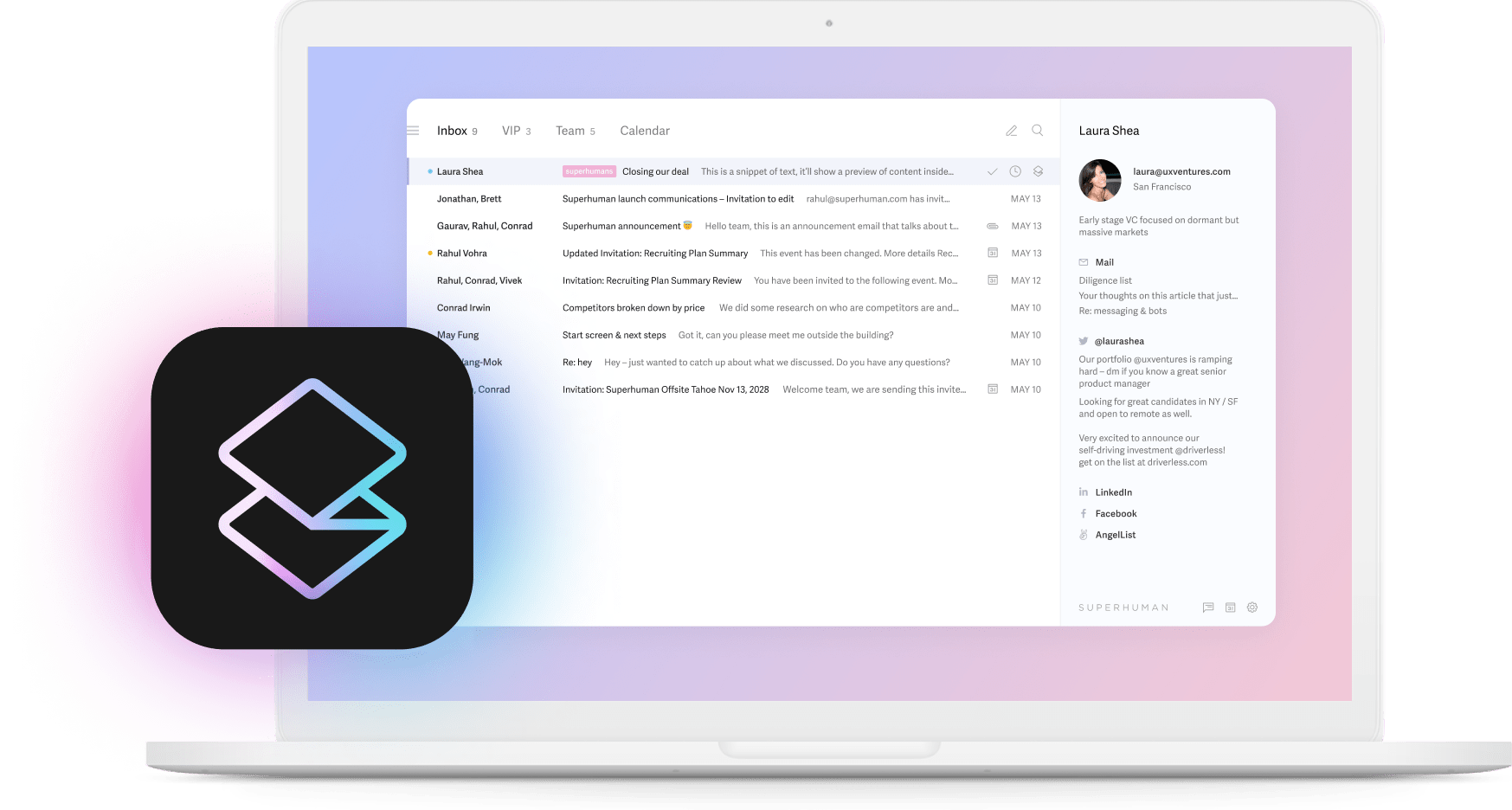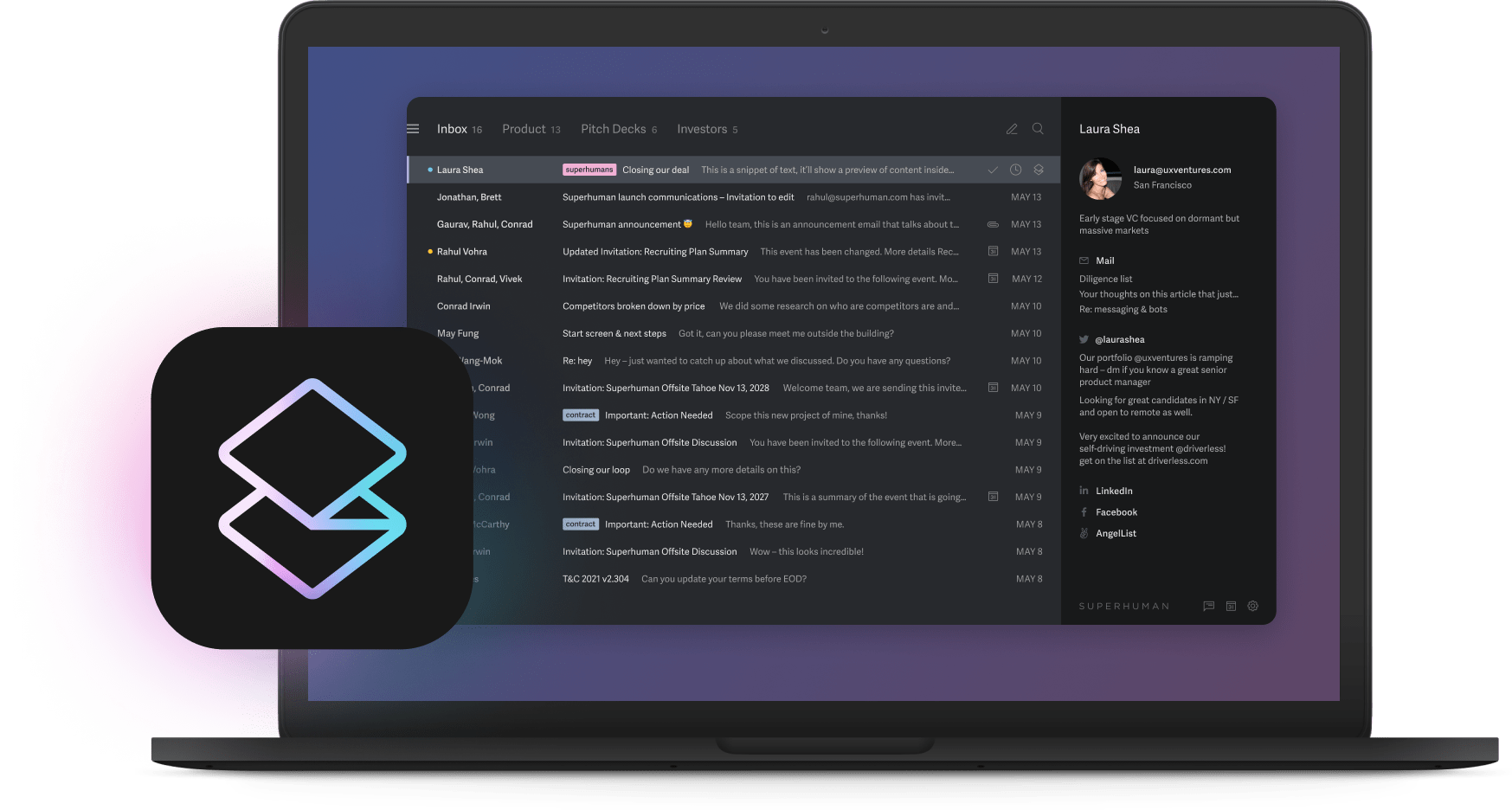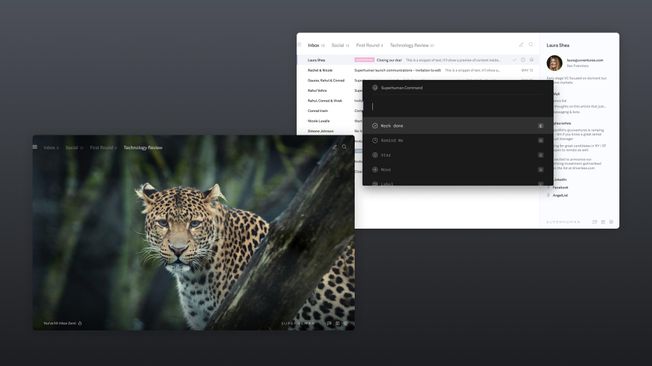
Your team sends hundreds of emails every day, yet critical messages still get buried, two people answer the same question, and you waste minutes rewriting the same line. Collaborative AI changes that reality.
This AI-native approach turns email into a shared, self-organizing workspace that prioritizes urgent conversations, drafts replies in your voice, and shows exactly who is responsible for each message.
Teams using these AI communication tools reply faster and handle more work in the same time.
You'll discover how collaborative AI transforms email chaos into coordinated workflows, explore real-world success stories, and find the tools that make email feel good again.
What is collaborative AI?
Collaborative AI refers to artificial intelligence systems designed to work alongside human teams rather than operate autonomously. In the context of business communication, collaborative AI integrates with email platforms to analyze, organize, and assist with message handling while maintaining human oversight and decision-making authority.
These systems use machine learning to study organizational communication patterns, including writing style, response protocols, and message prioritization. The technology assists teams by automating routine tasks, suggesting responses, and providing real-time coordination across multiple users working within shared inboxes.
Here's what sets this technology apart:
- Learns from team communication patterns so every draft matches your voice and brand
- Suggests replies and automates repetitive sorting, filing, and follow-ups, cutting busywork
- Gives real-time visibility into who's handling what, preventing duplicate responses through shared inbox views
- Maintains context across long email conversations, instantly summarizing key points the moment you open your inbox
Why does this matter? Email, chat, and calendar tools already absorb huge blocks of your workday. Traditional apps treat every message as a solo task, which hides information and slows teams down. Collaborative AI changes that completely.
It transforms your inbox into a coordination engine where priorities surface automatically, ownership stays clear, and responses go out faster. The result? A lighter inbox, fewer missed opportunities, and a team that moves in sync without adding extra meetings.
How collaborative AI works
Collaborative AI turns your inbox into a live coordination engine, handling the busywork so you focus on messages that matter.
The system starts with natural language processing that reads every incoming email, identifies intent, tone, and urgency, then sends that insight to machine-learning models trained on your team's past communication.
These models learn how you write, who usually answers which questions, and what "high priority" looks like. The result is instant sorting and prioritization that surfaces the right conversation to the right person.
Next comes multi-agent coordination. Think of it as a digital traffic controller that knows who is already replying, who should jump in, and when to nudge for a follow-up. Smart platforms route emails to the teammate best equipped to answer, add internal notes, and prevent duplicate replies.
Your partnership with AI works three ways.
First, decision support gives you real-time suggestions and summaries to respond faster. Second, workflow automation handles categorizing, tagging, and drafting automatically, saving precious minutes on every interaction. Third, team coordination provides shared visibility so everyone stays aligned without endless CCs.
The system improves daily by analyzing successful past emails and monitoring how you edit its drafts. It refines tone, adjusts suggestions to each recipient's history, and shortens future conversations through concise summaries. The more you write, the smarter it becomes, making your inbox feel significantly lighter and your team noticeably faster.
Real-world business use cases involving collaborative AI
Collaborative AI already runs behind the scenes of teams that live in their inbox, delivering measurable improvements across industries and use cases.
Support teams using AI-native tools save 4 hours every week and respond faster than ever before. No ticket slips through the cracks because shared inbox visibility, automatic routing, and instant drafting mean every teammate sees exactly who owns each email.
Split Inbox keeps the queue crystal clear while Auto Summarize surfaces key details instantly. With Shared Conversations, when one person hits Send, the whole team stays aligned without duplicate replies or scattered status updates.
Fast-growing startups leverage the same technology to scale without adding headcount. Smart prioritization surfaces VIP messages first, while Write with AI significantly reduces writing time, freeing founders to focus on product and customers instead of typing the same reply repeatedly.
Auto Reminders ping investors or partners at the perfect moment, a workflow that once required hours of calendar reminders. These teams handle twice as many conversations in the same time, keeping pace with growth across time zones.
Finance teams and other high-stakes industries rely on AI for precision and security. Instant thread summaries reveal key decisions at a glance, while Read Statuses and Smart Send help executives time sensitive announcements perfectly.
Advanced spam and threat filtering blocks phishing attempts before they reach leadership, letting teams act quickly without risking compliance.
Cross-functional project teams turn long email conversations into actionable progress through Auto Labels and ownership assignment. Search surfaces every past decision or attachment instantly, so launches stay on schedule and deals move forward. Because every stakeholder works from the same real-time view, miscommunication drops and projects gain momentum.
Across all these scenarios, the pattern is clear: AI-native email tools help teams fly through their inbox, respond to more messages, and reclaim hours for work that matters.
Benefits of collaborative AI and productivity gains
Collaborative AI turns email from a drain into a growth engine, delivering measurable improvements in speed, coordination, and quality.
Teams using AI-native inboxes save significantly more time than those relying on manual workflows. Automation sorts, labels, and archives routine messages the moment they arrive, so you only see what matters. That advantage compounds quickly, with AI-native inbox tools saving users about 4 hours per week on email management while consistently delivering faster response times.
Smooth coordination replaces busywork through shared visibility that shows who's drafting, who has replied, and what still needs attention. No more duplicate answers or confusion about ownership. AI-native routing sends every customer question to the right person, and teams can add context notes inside email conversations instead of starting separate chats. Teams handle significantly more emails in the same time, and issues often resolve sooner.
Quality rises alongside speed as draft assistants study your past writing, suggest replies in your tone, and flag unclear language. AI-native proofreaders catch typos, adjust formality, and translate on the fly, ensuring every recipient hears a consistent brand voice. When threads run long, instant summaries surface key decisions and next steps in seconds.
These gains scale without extra headcount. AI learns from every message, so a small team can manage a surging inbox while keeping quality high. New hires ramp faster with shared templates and highlighted best practices, while inboxes feel significantly lighter and workflows become effortless.
Step-by-step guide: Integrating collaborative AI in your team
Choosing an AI-native email tool is only half the battle. Real gains show up when your whole team adopts a new, shared way to handle the inbox. Follow these five steps to move from scattered messages to a synchronized workflow.
Step 1: Assess your team's communication pain points
Map where email slows you down by looking for repetitive replies, long CC chains, or forgotten follow-ups. Survey teammates on their biggest frustrations and pull hard numbers—response times, backlog size, missed deadlines. This baseline will help you measure success and identify which AI features will deliver the biggest impact.
Step 2: Choose the right collaborative AI tools
List the workflows that need help first—customer support, deal follow-ups, project updates. Short-list AI apps that integrate with your existing stack so data flows smoothly into Slack, CRM, and calendars. Run a two-week pilot with a small group, keeping in mind that ease of use matters more than feature counts since a steep learning curve kills adoption.
Step 3: Establish team standards and templates
Draft shared responses for common scenarios, from "Thanks for reaching out" to escalation notices. Clarify when to trust AI suggestions and when to personalize messages. Set simple rules—who assigns messages, expected reply times, how to tag urgent issues. Document everything in a living playbook so new teammates ramp up fast.
Step 4: Implement change management and training
Host hands-on sessions where teammates compose emails with live AI assistance. Nominate a few "power users" to answer questions in real time and celebrate early wins like faster responses or cleaner inboxes to build momentum. Address privacy concerns head-on and remind everyone that AI augments judgment rather than replacing it.
Step 5: Measure impact and iterate
Track numbers that matter: average reply time, inbox zero rates, customer satisfaction. Compare them to your baseline and double-down on features delivering the biggest gains. Share results, refine workflows, and expand the rollout once productivity lifts are clear.
Top collaborative AI tools and platforms
Finding the right tools to harness collaborative AI for email can transform your team's productivity. Here are the standout platforms across different categories.
Email and Communication
Superhuman Mail is an AI-native email client designed for speed and efficiency, making it a favorite for high-performing teams, executives, and customer-facing roles. With features like Shared Conversations, Snippets, Instant Reply, and Split Inbox, it integrates with Gmail and emphasizes team coordination, standing out for its AI-powered productivity features.
Document Collaboration and Knowledge Management
Coda combines the best of documents, spreadsheets, and apps in a collaborative workspace. With integrated AI features, it supports teams working together efficiently on complex projects.
Writing and Communication Quality
Grammarly is known for enhancing writing with AI-driven grammar, tone, and clarity checks. Its team features and integration capabilities ensure consistency across communications.
Choosing the Right Stack
When selecting your tools, start with communication tools that focus on email, then expand with document collaboration solutions and integrate writing assistance apps. Most importantly, ensure seamless integration between chosen tools to maintain smooth workflows.
By leveraging these tools effectively, your email management can become a coordinated powerhouse, improving both productivity and communication quality.
Transform email with collaborative AI today
Email doesn't have to be chaotic. When your team shares inbox visibility and uses AI that learns your voice, those hundreds of daily messages become a coordination advantage instead of a productivity drain. You get automated sorting and drafting that sounds like you, plus built-in templates that keep your brand voice consistent across every conversation.
Start your free trial of Superhuman Mail and make email feel good again.
Frequently Asked Questions
What's the difference between collaborative AI and generative AI?
Generative AI focuses on creating content from scratch, while collaborative AI learns your team's specific workflows and communication patterns. Tools like Superhuman Mail track who's handling what conversations, prevent duplicate replies, and surface the right context so your team can respond faster and stay aligned.
Will collaborative AI make my emails sound robotic?
No. Advanced AI systems analyze messages you've sent to specific recipients and match your tone and voice to them. The AI learns over time from your actual writing patterns, not from corrections. You stay in control—editing or sending with one click—so every message still sounds authentically like you.
How does collaborative AI handle sensitive information?
Leading platforms use enterprise-grade encryption and detailed audit logs to protect your data. You control who can read, assign, or reply to messages through role-based permissions, and every action is timestamped for compliance tracking.





